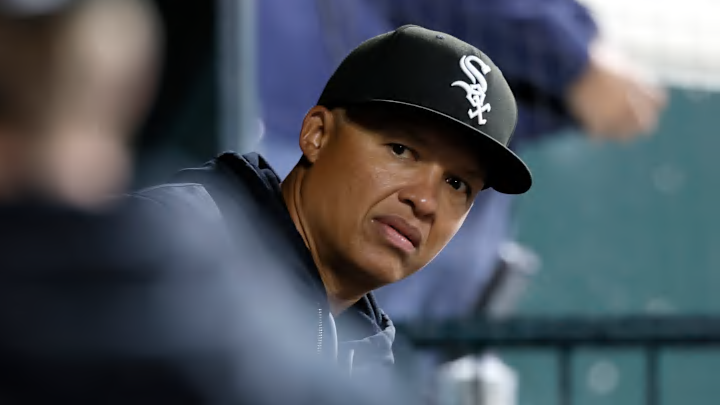Among the more disappoint aspects of the Chicago White Sox's 2025 campaign was the fact that the team didn't do a lot to build toward the future.
Sure, there were debuts from a number of top prospects, including catcher Kyle Teel and shorstop Colson Montgomery. They, along with Chase Meidroth and the starting pitching triumvirate of Shane Smith, Sean Burke, and Davis Martin, all look like cornerstone players for the next era of White Sox baseball.
However, in a 60-102 season, you'd like to see the front office capitalize on some of the veteran talent on the team and trade them for prospects than can aid the future. Instead, Chicago completed just two trade deadline deals, notably bringing Curtis Mead and Gage Ziehl into the organization.
That left a lot of the meat on the bone, as players like Michael A. Taylor and Mike Tauchman were retained beyond July 31, despite having no real future on the South Side.
The most damning decision, though, was the front office's choice to hold onto Luis Robert Jr. Now set to get more expensive with a couple of team options, the team will regret not capitalizing on his scorching hot July at the trade deadline.
Luis Robert Jr.'s disastrous second half could deprive White Sox of much-needed prospect talent
Robert has been an injury-riddled conundrum since his All-Star campaign in 2023, though for a brief moment this season, things seemed to be turning around.
After a strikeout-laden start to the season, the center fielder hit .353/.441/.549 with five home runs and three steals in July, all while dropping his strikeout rate to 16.9% (half of what it had been in the first few months of the season). His 176 wRC+ was one of the best marks in the league during the month, and it appeared as though the 28-year-old had found his All-Star hitting stroke at just the right time.
Unfortunately, the White Sox bought into that turnaround a bit too much. They held onto Robert at the trade deadline, and then he struggled in August (89 wRC+) before suffering a Grade 2 hamstring strain that took him out for all of September. In less than a month, his trade value vanished.
Robert now has two years of control remaining, both in the form of club options worth $20 million. It's hard to imaging the team turning those down -- especially when the qualifying offer is listed at $22 million -- but that salary is only going to make it that much harder to trade Robert going forward.
Notably, one of the reasons the White Sox cited for their decision to hold onto Robert was that exact contract complication. The team felt like they were getting offers that treated him as a rental, whereas the Pale Hose felt Robert had 2.5 years of team control remaining. Hence, the gap in value was too wide and no deal was made.
It's hard to understate how poor of a choice this was by the front office. Even if they were scared off after the Andrew Vaughn trade immediately backfired, they've missed out on a prime opportunity to replenish the farm system with blue-chip talent.
Unless Robert can prove he's healthy and replicates his performance from July, it's difficult to imagine the White Sox getting a good value for their franchise outfielder in a trade now.
